In this Article:
When it comes to rifles used for home defense or in range competitions, the debate between 5.56×45 and 7.62×39 is frequently discussed among shooters and prospective buyers.
Each cartridge boasts a storied history of use in both military and civilian contexts and has garnered dedicated supporters.
This comparison is particularly intriguing given that these rounds have frequently been employed by opposing forces throughout history.
Key Takeaways
When comparing 5.56 NATO vs 7.62x39mm ammo, the choice largely depends on your priorities. 7.62×39 delivers a heavier bullet with greater terminal energy. Commonly found in AK-pattern rifles, the round excels at close range and situations where deep penetration is desirable.
In contrast, 5.56x45mm NATO features higher velocities and a flatter trajectory, which lends it to longer-range shooting. Making accurate hits at distances beyond 300 yards is generally much easier with 5.56. The 5.56 also offers bullets with better ballistic coefficients, further improving long-range shooting, particularly in windy conditions.
5.56 NATO vs. 7.62x39mm Ammo Comparison
| Category | 5.56x45mm NATO | 7.62x39mm |
|---|---|---|
| Origin | USA / NATO (standardized in 1980) | Soviet Union (developed in late 1940s) |
| Common Platforms | AR-15, M4, M16, Mini-14 | AK-47, SKS, Ruger Mini-30 |
| Bullet Diameter | 0.224 in (5.7 mm) | 0.311 in (7.9 mm) |
| Typical Bullet Weight | 55-77 grains | 122-154 grains |
| Average Velocity | 2,900-3,200 fps (depending on barrel length) | 2,200-2,400 fps |
| Effective Range | 500-600 yards (combat effective) | 300-400 yards (combat effective) |
| Recoil | Low to moderate | Moderate to high |
| Terminal Performance | High velocity, fragmentation potential | Heavier round with strong penetration and energy transfer |
| Ammo Cost | Generally more expensive per round | Often cheaper due to military surplus availability |
| Magazine Capacity (standard) | 30 rounds (AR-style mags) | 30 rounds (AK-style mags) |
| Best For | Accuracy, flatter trajectory, long-range use | Shorter-range power, brush hunting, rugged use |
A Brief History
5.56x45mm NATO
The 5.56 NATO evolved from the .223 Remington, which was created by Eugene Stoner with assistance from Remington, Winchester, and the US Army.
The Army, in search of a new small-caliber combat cartridge with high velocity and a flat trajectory, needed fresh ideas. Stoner, having recently designed the AR-10, realized that a smaller caliber version of his rifle would be ideal for this new requirement.
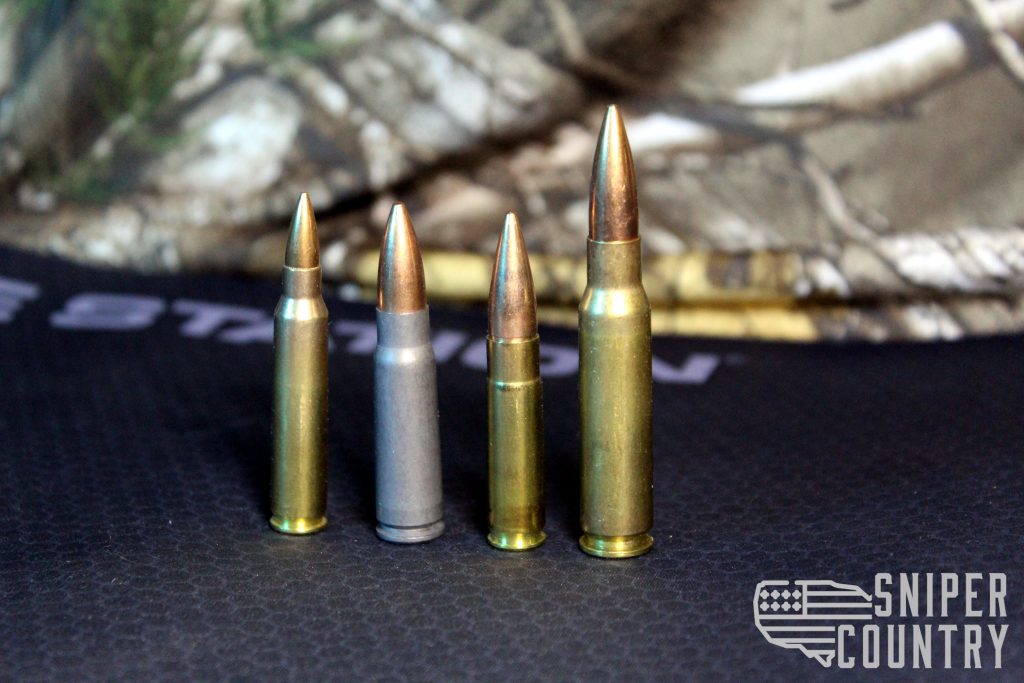
In the late 1950s, Stoner began his development work.
Within a few years, both the .223 Remington and the AR-15 were introduced.
However, NATO would not standardize the cartridge until 1980. By then, the cartridge, and more notably the chamber design, had undergone slight dimensional changes, resulting in the 5.56 NATO.
Generally speaking, while 5.56 NATO chambers can safely fire both 5.56 NATO and .223 Remington, .223 Remington chambers should only fire .223 Remington cartridges.
7.62x39mm
The 7.62×39 is one of the most used cartridges throughout the world.
It was designed in the 1940s in the Soviet Union to produce an intermediate cartridge that could be used in a variety of military settings.
In short, an all-purpose cartridge.
Development started in 1943 but was not finalized until 1947, since then it has remained unchanged.
Designed for steel cases, brass-cased ammunition is relatively rare even in the USA. This can lead to extraction issues because AKs are typically designed for steel case ammo, while ARs are built for brass.
Both issues are easy to overcome with quality parts.
Specs
| 5.56x45 | 7.62x39 | |
|---|---|---|
| Bullet Diameter | 0.224" | 0.312" |
| Neck Diameter | 0.253" | 0.339" |
| Base Diameter | 0.377" | 0.447" |
| Case Length | 1.760" | 1.524" |
| Overall Length | 2.260" | 2.205" |
| Case Capacity | 28.5gr | 35.6gr |
| Max Pressure | 55,114psi | 45,010psi |
While not absolutely essential, the specifications of each cartridge can provide a clearer understanding of what we’re dealing with. If you’ve used both cartridges previously, this may be less necessary, but for those who haven’t, we believe this information is beneficial.
The 5.56×45 casing and the entire cartridge are more slender and elongated compared to the 7.62×39. Nevertheless, due to the bullet length and their position within the casing, the total length of the two cartridges differs by just six-hundredths of an inch.
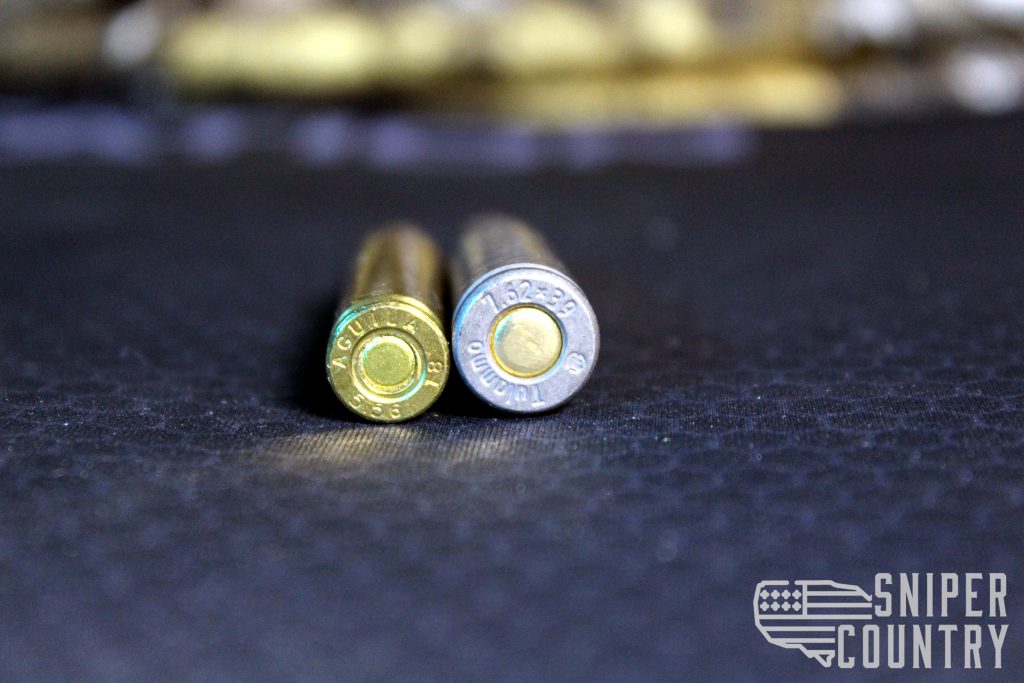
Although the 7.62×39 round can contain more powder than the 5.56×45 NATO, it can’t withstand the same level of pressure. To assess these two popular semi-automatic cartridges, we have chosen five rounds for each, covering a broad spectrum of bullet types and weights to provide a fair comparison.
We are also aware that this is still a small sample size for the number of options that are available. You might have a round you are partial to and just because it is not on this list does not mean we think it doesn’t belong or is inferior in any way. We just simply had to take into account space and clarity.
For a more thorough analysis, we reviewed a wide array of ammunition and compiled the data. Though we won’t analyze every individual round due to potential clutter in graphical representation, we’ve averaged the data from all rounds to be presented in each section.
This increases the sample size and will also allow you to see for yourself if the rounds we have selected for comparison give a good picture of how these two cartridges stack up to each other.
The full list of rounds used is available at the end of the comparison. We hope your preferred round is included and that it doesn’t lead to any dissatisfaction.
Below is a list of the selected rounds.
 5.56×45 NATO Hornady BTHP Superformance Match 75gr
5.56×45 NATO Hornady BTHP Superformance Match 75gr 5.56×45 Federal American Eagle FMJ 55gr
5.56×45 Federal American Eagle FMJ 55gr 5.56×45 NATO Winchester FMJ 55gr
5.56×45 NATO Winchester FMJ 55gr 5.56×45 NATO Hornady FMJ Black 62gr
5.56×45 NATO Hornady FMJ Black 62gr 5.56×45 NATO Magtech HPBT 77gr
5.56×45 NATO Magtech HPBT 77gr
 7.62×39 Winchester Super-X 123gr
7.62×39 Winchester Super-X 123gr 7.62×39 Remington UMC Metal Case 123gr
7.62×39 Remington UMC Metal Case 123gr 7.62x39Fusion Soft Point 123gr
7.62x39Fusion Soft Point 123gr 7.62×39 Hornady SST Steel Case 123gr
7.62×39 Hornady SST Steel Case 123gr 7.62×39 TulAmmo FMJ 122gr
7.62×39 TulAmmo FMJ 122gr
Before diving into the comparison of these two cartridges, we need to briefly cover the data we’re using and its source. All data in this article are computer-generated, either by the manufacturer or through ballistic calculators we employed. When using a ballistic calculator, we will specify the variables involved.
Since the data is computer-generated, there might be slight variations when compared to measurements taken directly from a rifle. This is due to the unique shooting profile of each rifle, and even the same round can vary between different rifles. However, computer-generated data helps eliminate these minor differences and environmental factors.
In the upcoming sections, we will examine the 5.56×45 versus the 7.62×39 across various ballistic and performance categories, including recoil, velocity, ballistic coefficients, trajectory, energy, and sectional densities.
Recoil
Although these cartridges are increasingly used in hunting, they are primarily designed for close to medium-range applications.
They are also popular choices in shooting competitions, where managing recoil is crucial for maintaining accuracy during rapid successive shots.
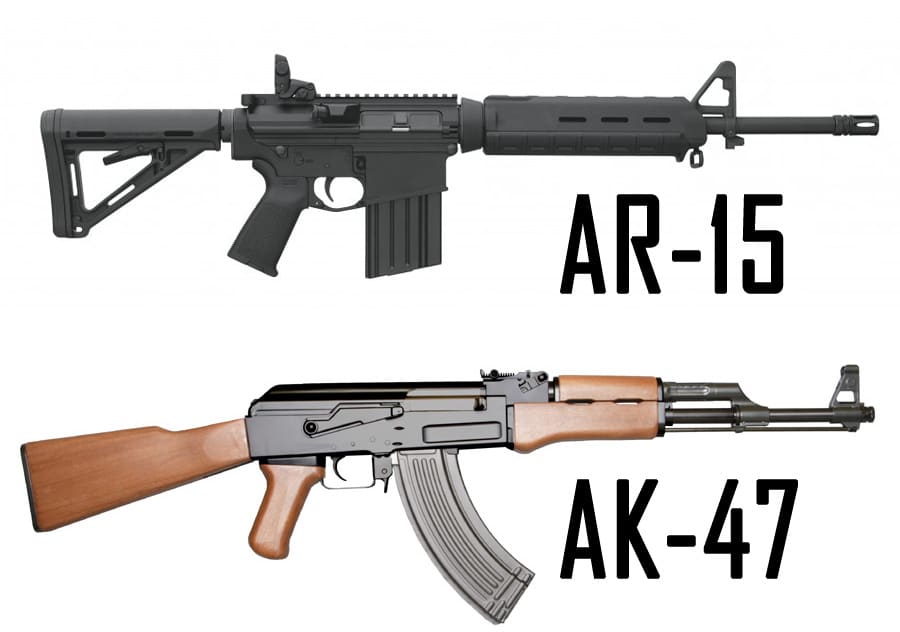
To compare recoil, we will examine the actual recoil force produced when firing a round (ft.lb). Although this doesn’t exactly represent the “felt recoil” or kick, it still provides an insight into what you might experience in the field.
Before analyzing the recoil energy from our ten chosen rounds, we’ll first review a general comparison of recoil energy between the two cartridges, based on data from the ballistic calculator (Graph 1).
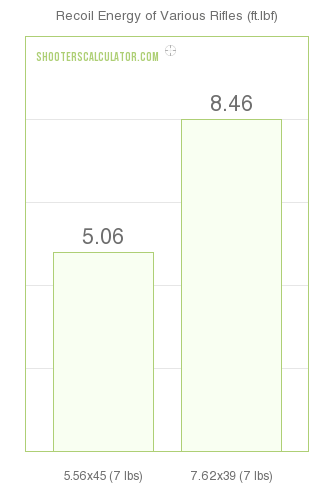
To calculate recoil energy, several factors are required, including the muzzle velocity of the round, the powder charge, and the weight of the rifle. This means we have significant control over the resulting numbers. While this is a limitation of computer-generated data, it allows for a more consistent comparison between cartridges rather than just individual rounds.
From the initial graph, we observe that the 7.62×39 cartridge produces slightly more recoil force than the 5.56×45 NATO. Although the difference is minor, it can accumulate when firing multiple shots rapidly. For single shots, neither cartridge is likely to cause flinching for experienced shooters, with both generating less than 10 ft.lb of recoil energy.
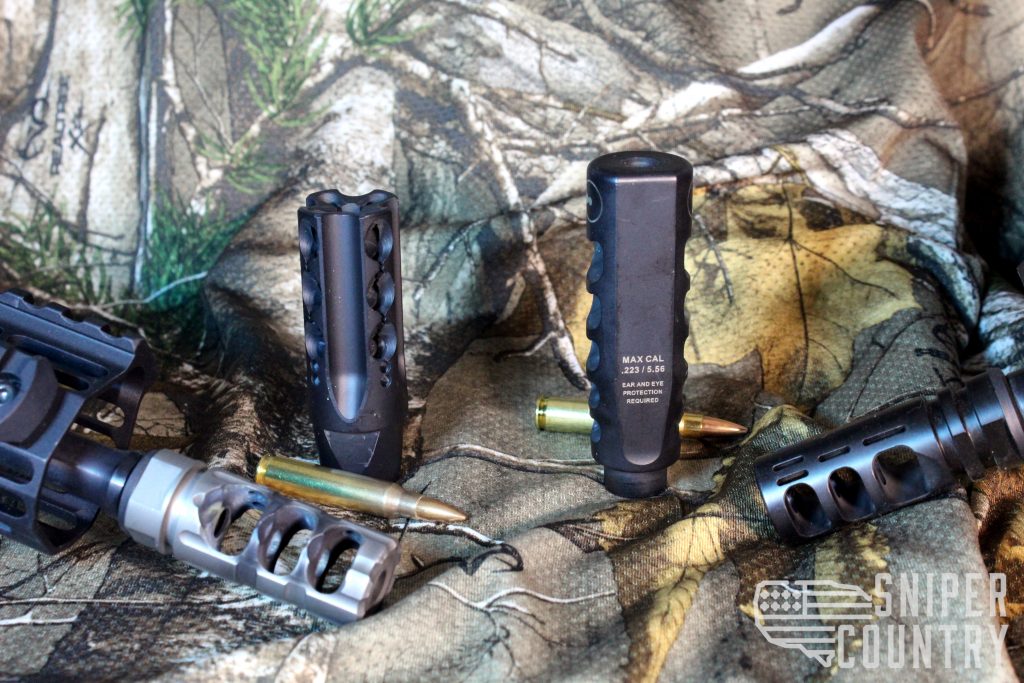
Let’s examine the recoil energy produced by our ten selected rounds to see if this pattern persists or if there’s more variability. This data was generated using each round’s bullet weight, muzzle velocity, rifle weight (7 lbs), and powder charge. For the powder charge, we averaged several typical powder loads from Nosler’s data and maintained that charge consistently for each round within the same cartridge.
While the actual numbers may vary slightly depending on the specific powder charge used by the manufacturer, the overall trends between the cartridges should still be evident (Graph 2).
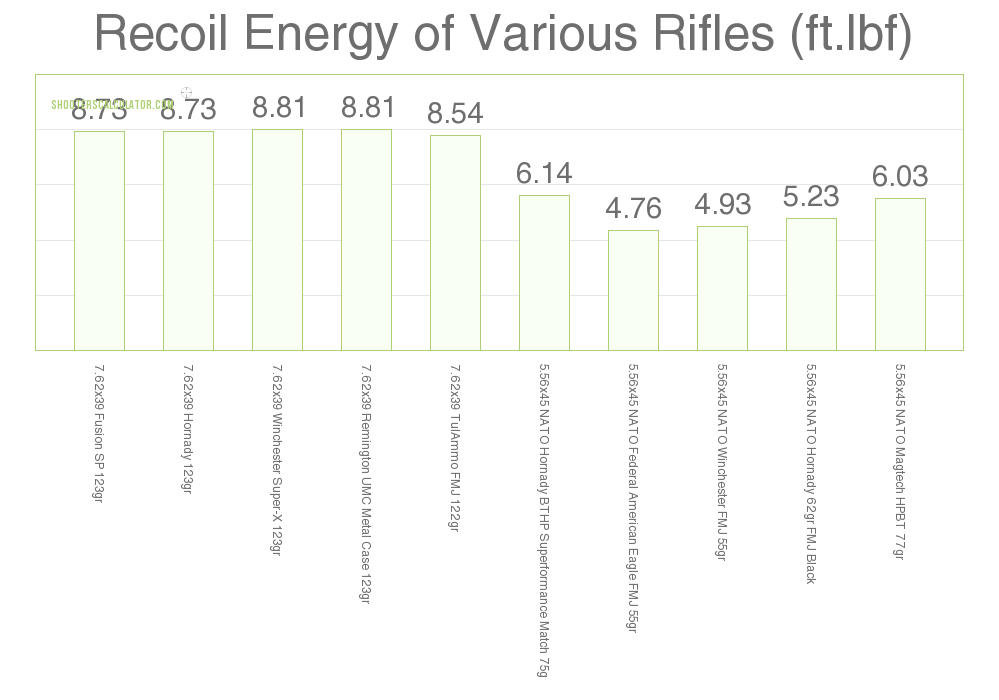
We do observe some variability in the recoil energy from round to round within the same cartridge, but the overall trend remains consistent. You will experience a few extra ft.lb of force when firing a 7.62×39 compared to a 5.56 NATO. None of the 5.56×45 rounds exceed the 6.2 ft.lb mark, while all the 7.62×39 rounds fall between 8 and 8.2 ft.lb. These figures align with what we expect from rounds designed for semi-automatic use.
The table below lists the recoil averages for all the rounds from our full list at the end of the article. We calculated these averages using the same method described earlier. The table confirms the trends observed in the graphs above.
There is approximately a three and a half pound difference in force between the two cartridges, which matches our earlier observations. This difference in recoil energy aligns with the specifications we reviewed. However, it’s important to note that recoil can be further managed with muzzle brakes, buffer weights, rifle weight, and specific ammunition choices.
All in all — felt recoil is practically speaking about equal between the two cartridges.
Average Recoil (ft/lb)
| 5.56x45mm | 7.62x39mm |
|---|---|
| 5.21 | 8.73 |
Ballistics
In this section, we will examine these two cartridges across several ballistic categories.
Although ballistics alone do not determine the best cartridge for specific hunting, tactical, or general shooting scenarios, they are a crucial factor. We will analyze ballistic coefficients, velocity, and trajectory.
This data will be used at the end of the article to draw conclusions about the applications of the 5.56×45 versus the 7.62×39.
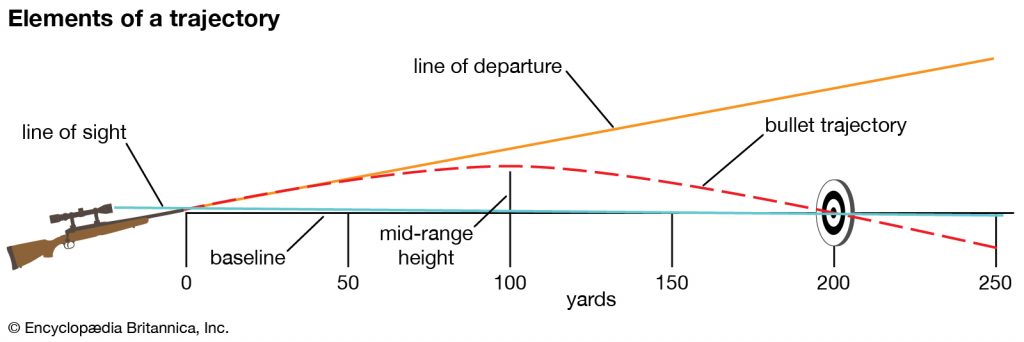
It’s important to understand that while we are analyzing each category separately to compare the two cartridges, no single category provides the complete picture.
To make an informed decision, you need to integrate all this information to determine which cartridge is better for specific scenarios. We will aim to synthesize and summarize all the findings at the end of the article to assist in your decision-making.
Velocity
Velocity is a key category for comparison when evaluating two cartridges because it affects nearly every other ballistic and performance specification we examine. Faster rounds reach their target more quickly and are less affected by environmental factors that can alter their trajectory and flight path.
Additionally, velocity plays a crucial role in terminal ballistics, influencing bullet expansion and penetration.
Let’s review our ten rounds to see what conclusions we can draw about the performance differences between these two cartridges.
We will be looking at the velocity (ft/s) from the muzzle out to 500 yards. This data was compiled from the manufacturer or from ballistic calculators if the data was not present (Graph 3).
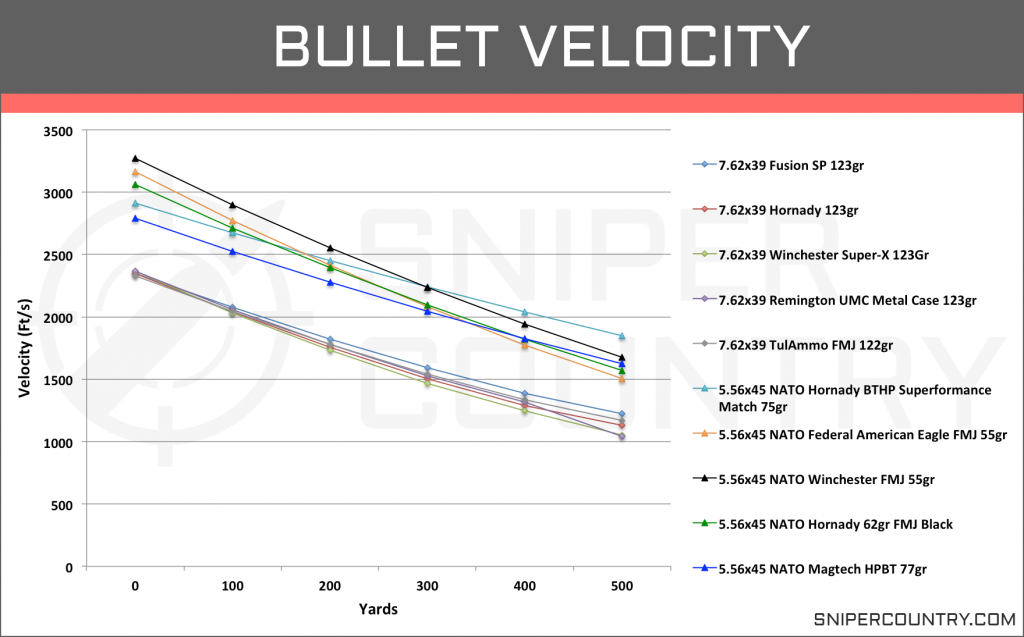
When comparing the velocity of the 5.56×45 to the 7.62×39, there is a clear distinction between the two cartridges. The 5.56×45 rounds consistently show higher velocities, creating a significant gap between them and the 7.62×39 rounds.
The 5.56×45, with its lighter bullets and similar powder loads, provides a much faster muzzle velocity, averaging 3,038 ft/sec, and retains an average velocity of 1,645 ft/sec at 500 yards. All 5.56×45 rounds remain supersonic over the entire 500-yard range.
The 7.62×39 rounds have an average muzzle velocity of 2,352ft.sec and end at the 500-yard mark with an average of 1,123ft.sec.
While the 7.62×39 rounds have an overall lower velocity from the muzzle out to 500 yards, they do tend to hold onto their velocity better than the 5.56 where velocity bleeds off rapidly. The 7.62×39 rounds do fall below supersonic speeds at the 500-yard mark.
Let’s bring some more rounds for each cartridge into the mix and see if we see if the trend remains the same or if we see the gap close or widen.
Average Velocity (ft/sec)
| Yards | 5.56x45mm | 7.62x39mm |
|---|---|---|
| Muzzle | 2989.6 | 2352.9 |
| 100 | 2664.5 | 2048.3 |
| 200 | 2363 | 1748.5 |
| 300 | 2083.4 | 1520.2 |
| 400 | 1826.9 | 1308 |
| 500 | 1572.6 | 1144 |
We do all of the averages drop just a little when we bring in more rounds, but the trends that we saw all hold up. The 5.56×45 cartridge brings several hundred more ft/s of velocity than the 7.62×39 throughout the bullets flight. We also see the same trend of the 7.62×39 rounds maintaining their velocity at a better rate than the 5.56×45 rounds.
Ballistic Coefficient (BC)
The ballistic coefficient (BC) is derived from various bullet design factors and indicates how well a bullet is streamlined.
A higher BC means the bullet is more aerodynamically efficient, experiencing less air drag and wind drift. Consequently, bullets with higher BCs maintain their velocity, force, and trajectory more effectively than those with lower BCs.
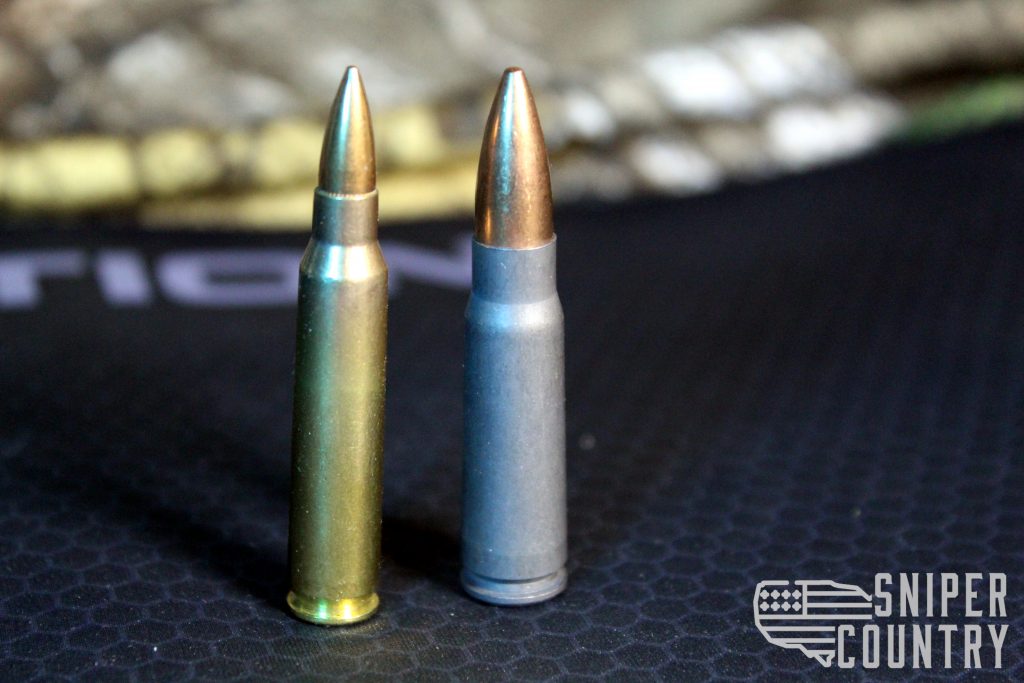
And well it doesn’t necessarily mean a more accurate bullet; it does make it easier to become accurate with it at extended distances. The BC doesn’t replace skill by any means and a high BC is not going to turn you into a Marine sniper, but it can make adjusting for long range shots a little more manageable.
However, the ballistic coefficient really only matters for long range shooting. Practically speaking, muzzle velocity will make a much bigger difference at shorter ranges than the shape of the bullet.
Let’s compare the BCs of our ten rounds and see how these two cartridges differ (Graph 4).
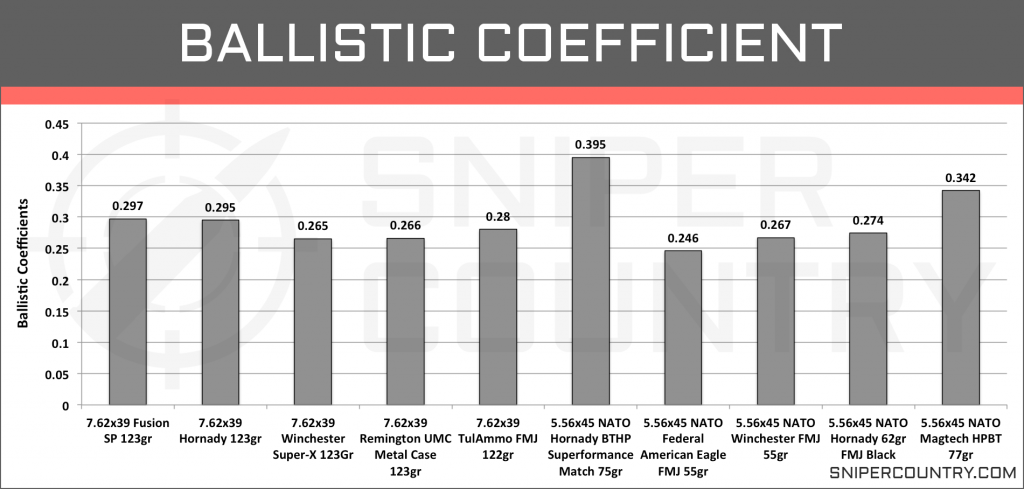
All of these figures were gathered from the manufacturers of the various rounds. Overall, the ballistic coefficients for these two cartridges are quite similar, generally falling within the .25 to .30 range.
We do observe more variability among the 5.56×45 rounds. Two rounds stand out with high BCs of .342 and .395, while another round within the same cartridge has a lower BC of .246. This variation is expected given the popularity and diverse options of the 5.56×45 rounds.
When averaging the BCs with additional rounds, the 5.56×45 maintains a slight edge. However, in practical applications, this difference may not be highly noticeable when compared to real-world performance.
Average Ballistic Coefficient
| 5.56x45mm | 7.62x39mm |
|---|---|
| 0.286 | 0.27 |
Trajectory
Regardless of the shooting scenario, the trajectory of the 5.56×45 versus the 7.62×39 is one of the primary attributes evaluated. Ideally, you want a flat trajectory, meaning the bullet travels a considerable distance with minimal drop, measured in inches.
Greater bullet drop necessitates larger adjustments for accurate shooting and makes it more challenging to maintain consistent accuracy without extensive practice. Before diving into the short and long-range trajectories, we’ll present a graph that illustrates the flatness of the trajectories for these two cartridges (Graph 5).
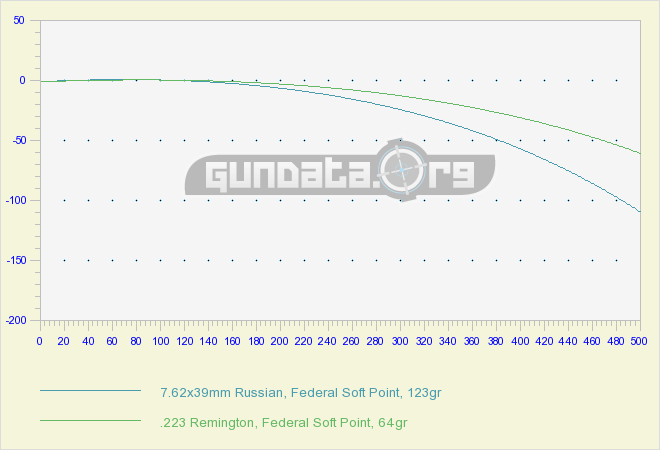
To compare these cartridges, we chose a round from each that is produced by the same manufacturer, using similar bullet designs, weights, and ballistic coefficients.
Selecting rounds of similar weight is near impossible with these two cartridges as we have discussed before, the 7.62 uses a higher caliber bullet than the 5.56 which often means heavier bullets.
Assuming a 100 yard zero, both of these cartridges maintain nearly the same trajectory out to the 180-yard mark.
From here, we begin to see the differences between these two cartridges. The much lighter 5.56 round can maintain a much flatter trajectory than the 7.62 round and as the yardage increases so does the difference in bullet drop.
By the 500 yard mark, the 7.62×39 round has dropped nearly 50 more inches than the 5.56×45 NATO round.
Let’s zoom in and look at sections of these range in more detail and see if the above trend continues.
Short Range Trajectory
For a 5.56×45 vs 7.62×39 debate, the short-range trajectory is probably a little more relevant than the long-range trajectory given the applications of these cartridges.
For short-range trajectory, we are going to compare our selected rounds out to a distance of 300 yards with the test firearms zeroed in at 100 yards.
We are measuring bullet drop in inches. Data was generated by compiling the numbers from the manufacturer or by a ballistics calculator. With the ballistics calculator, we determined the short range trajectory by using each rounds bullet weight, muzzle velocity, and ballistic coefficient (Graph 6).
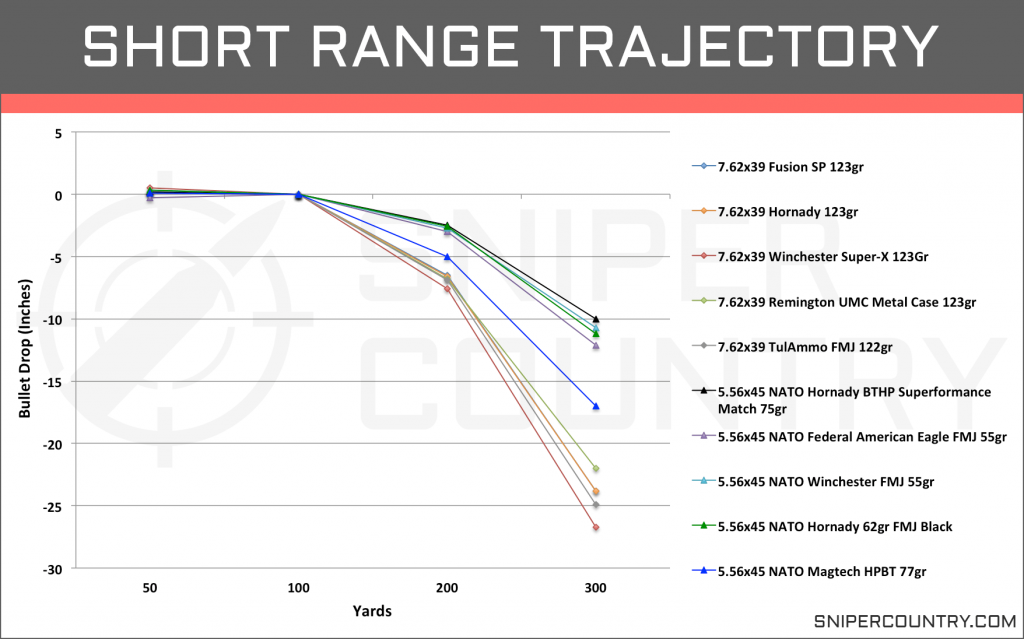
Leading up to the 100-yard mark we do not see any noticeable difference between these two cartridges worth mentioning.
From the 100 to 200 mark, the gap does widen pretty significantly with around three inches difference between the 5.56 and 7.62 rounds averages at this range. We also see that the rounds from the two cartridges group with their respective cartridge type.
The difference between the averages would be more pronounced, but you can see that the 77gr Magtech 5.56×45 round is a little steeper than the other 5.56 rounds.
The difference widens even further as the rounds move out to 300 yards. At this point, there is around 12-inch difference between the averages of the two cartridges.
It is pretty clear that the 5.56×45 NATO rounds show flatter trajectories than the 7.62×39 rounds at short range. And while there is a difference, we still think both of these cartridges are effective at these ranges; you will just be adjusting more for shots taken with a 7.62×39.
Let’s take a look at the averages of these two cartridges when we use a larger sample size in the table below. The trajectories were calculated for the other rounds in the same manner that we previously stated.
Average Bullet Drop (Inches) at Short Range
| Yards | 5.56x45mm | 7.62x39mm |
|---|---|---|
| 50 | -0.207 | 0.16 |
| 100 | 0 | 0 |
| 200 | -3.38 | -6.3 |
| 300 | -12.86 | -25.2 |
| 400 | -30.1 | -58.5 |
We see that the larger sample size still shows the same trends as our smaller, graphed selection.
All of this should make sense to us given that we are looking at two cartridges that have close to the same capacity though the 7.62×39 can hold around 7 grains more at max capacity, but with the 5.56×45 rounds having higher overall velocities, lighter bullets, and mainly higher ballistic coefficients.
All of that influences the less severe bullet drop of the 5.56×45 when compared to the 7.62×39 rounds.
While this trend will continue at long range trajectories, we will still take a look to see how drastic a difference it is.
Long Range Trajectory
The 7.62×39 cartridge has a bad rap when it comes to long-range shooting ability, especially when compared to the lighter 5.56×45 rounds. In this section, we will use out ten selected rounds for our 5.56×45 vs 7.62×39 comparison and see if its reputation is supported by the data.
As with the short range trajectory, we are still measuring the bullet drop in inches of our eight rounds. In this section, firearms are zeroed in at 200 yards and data points taken at 100-yard intervals out to the 500-yard mark. Data was collected and generated in the same manner as the short range trajectory (Graph 7).
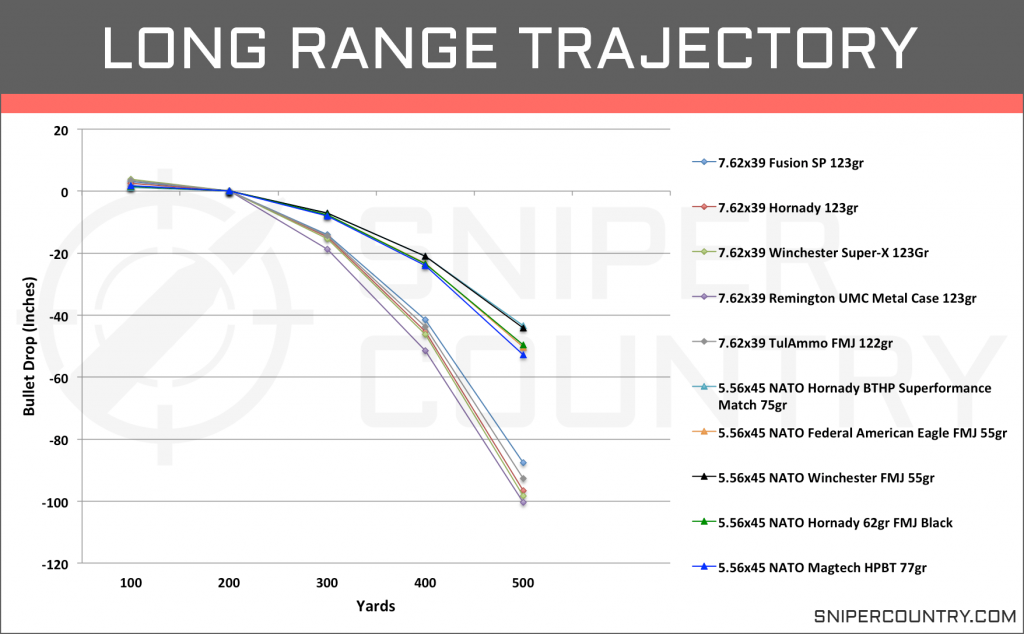
Like the short range trajectory, we again see a significant difference between cartridges with each round grouping tightly with their cartridge type.
Even out to 300 yards there is a 15″ difference in the average bullet drop favoring the 5.56 NATO. As the range increases so does the difference between the two cartridges. Out at 500 yards, there is at most 50″ of difference between the two.
The 5.56 NATO rounds lose between 40-50″ while the 7.62×39 rounds drop 90-100″. This is a significant bullet drop for both rounds, but the 7.62×39 is much more pronounced and will be a major factor in applications for these two cartridges.
Like we have been doing, let’s take a quick look at the averages for our full selection of rounds and see if the trend holds up.
In the table below, we have listed the same yard markers and also concluded more exreme distances that are hardly ever attempted seriously with these two cartridges, yet it does highlight the differences between these two cartridges well.
Average Bullet Drop (Inches) at Long Range
| Yards | 5.56x45mm | 7.62x39mm |
|---|---|---|
| 100 | 1.75 | 3.49 |
| 200 | 0 | 0 |
| 300 | -8.3 | -14.75 |
| 400 | -24.56 | -44.7 |
| 500 | -54.2 | -95.2 |
| 700 | -147.5 | -277 |
| 1000 | -487 | -844.5 |
Again, even with more samples available, the trend remains the same. The 7.62×39 rounds, on average, have about twice the amount of bullet drop than the 5.56×45 rounds. The 7.62×39 rounds also are at least or more than twice the weight of the 5.56×45 rounds so it is not very surprising.
Stopping Power
Before any comments come in, let’s clarify what we mean by “stopping power.â€
First of all, there is no such thing as “stopping power”. This is not an objectively measurable fact. Two guns don’t do 5 health points of damage vs. 8 health points.
What we mean by “stopping power” is a wide mix of factors such as penetration, wound cavity, hydrostatic shock, kinetic energy, and energy transfer.
All of this put together with some educated conclusions results in “stopping power” or the ability of the cartridge to kill whatever it is you’re trying to kill be it man or beast.
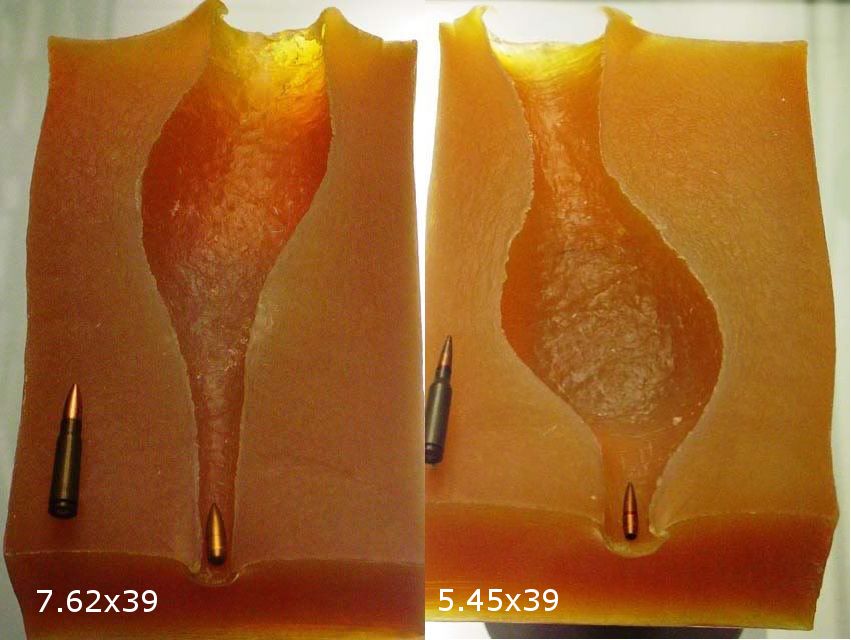
Stopping power involves multiple factors. In this section, we will focus on three key aspects: kinetic energy, sectional density, and bullet momentum. While bullet type is another factor, it doesn’t provide comparative insights for different cartridge types.
The three components we’ll examine all affect a projectile’s behavior upon impact. You’ll often find debates about which factors matter most, but these three are central to understanding how a round performs on target.
Energy
In this section, we’ll examine the kinetic energy of these rounds as they travel downrange. This energy comes from the force exerted on the bullet by the ignited powder and the bullet’s mass. Upon hitting the target, this energy transfers to the target, potentially causing trauma to tissues and organs.
Let’s analyze the kinetic energy of the ten rounds we’ve been reviewing. This data was gathered from the manufacturer (Graph 8).
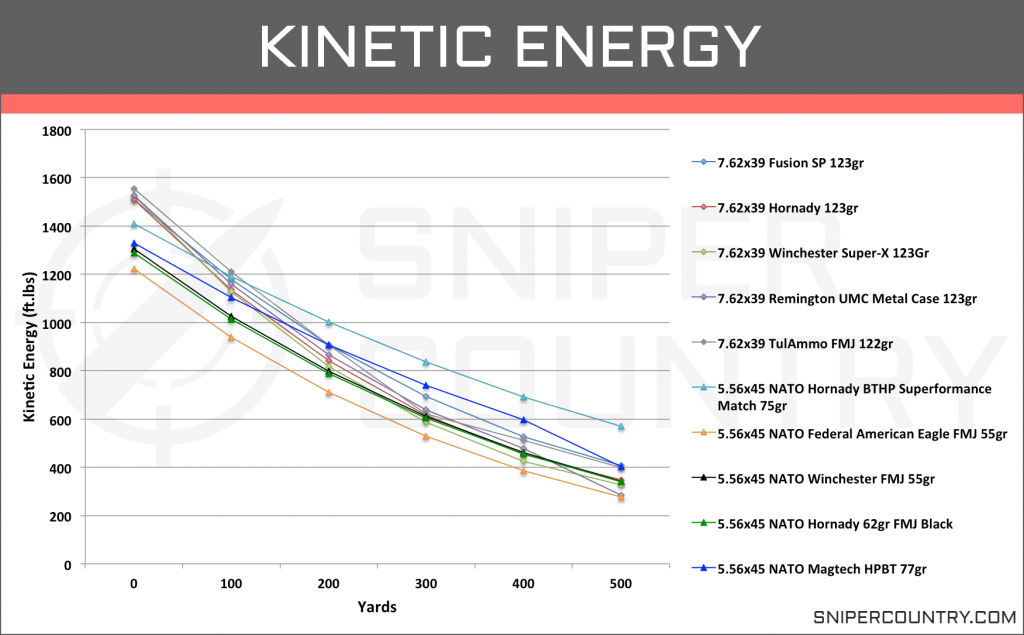
The muzzle energy shows a distinct advantage for the 7.62×39 cartridge. The 7.62×39 has an average kinetic energy of 1,525ft.lb while the 5.56×45 rounds have an average energy of 1,311ft.lb.
However, keep in mind that while those numbers might seem largely different — it’s only about 15%.
We also see that the rounds for each cartridge groups fairly tight.
Out to the first 100 yards, the 7.62×39 rounds still have an advantage in kinetic energy (ft.lb) over the 5.56 NATO rounds though the gap between the two cartridges shrinks considerably.
The heavier 75gr 5.56 round performs nearly as well, and we will see that it maintains this force much better than the 7.62 rounds.
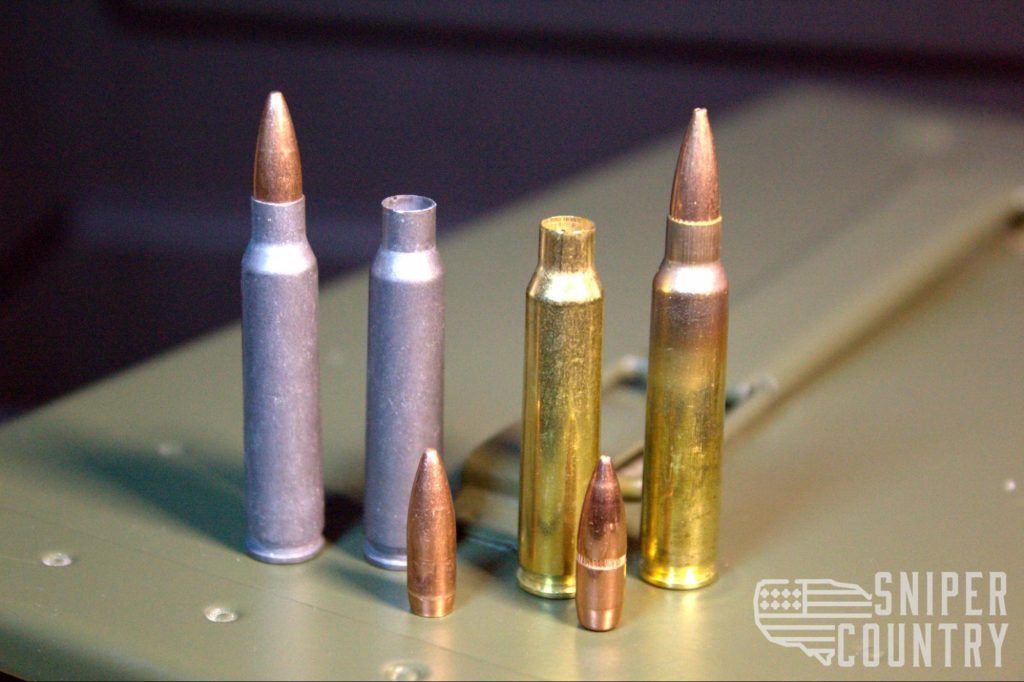
At 200+ yards, the 7.62×39 rounds begin to bleed off their energy and are very similar to the 5.56 NATO rounds, with rounds of both cartridges falling below the 1,000ft.lb mark.
Another interesting point is that from this yard marker to 500 yards, the two best performing rounds are 5.56×45 rounds.
Beyond the 300 yard mark, we no longer see the distinct trends between 5.56×45 Vs 7.62×39. At this point, it depends on the individual round to determine the best performance. We do still see a slight increase in the amount of energy for the 7.62 rounds at these ranges, but the difference between the two is less than 100ft.lbs.
Now again we are looking at the averages for all of our compiled rounds to see if these same trends continue.
Average Kinetic Energy (ft/lb)
| Yards | 5.56x45mm | 7.62x39mm |
|---|---|---|
| Muzzle | 1251 | 1508.8 |
| 100 | 995.4 | 1142.3 |
| 200 | 785 | 849.9 |
| 300 | 613.7 | 626.6 |
| 400 | 474.6 | 463.9 |
| 500 | 348.3 | 355.9 |
Again, we see the same trend between these two cartridges when we bring in more samples. From the muzzle too 100 yards, the 7.62×39 brings a pretty significant more amount of kinetic energy than the 5.56×45 rounds.
And again, it is interesting to compare these two cartridges as the rounds move past the 100 yard mark. As they continue, the 7.62×39 rounds tend to lose energy at a much higher rate than the 5.56×45 rounds.
From 200 yards out to 1,000 yards, there is less than 100ft.lbs difference between 5.56×45 Vs 7.62×39 averages.
Penetration
Penetration is a key aspect of a bullet’s stopping power. In this section, we’ll compare the penetration of the two cartridges by examining the sectional densities of their bullets.
Sectional density is calculated from the bullet’s weight and diameter, but factors like bullet design and jacketing also influence penetration. For instance, a hollow point expands quickly, reducing penetration, while a full metal jacket typically penetrates deeper and more cleanly.
We’ll focus on sectional density for our comparison, using a ballistic calculator to generate the densities for each round (Graph 9).
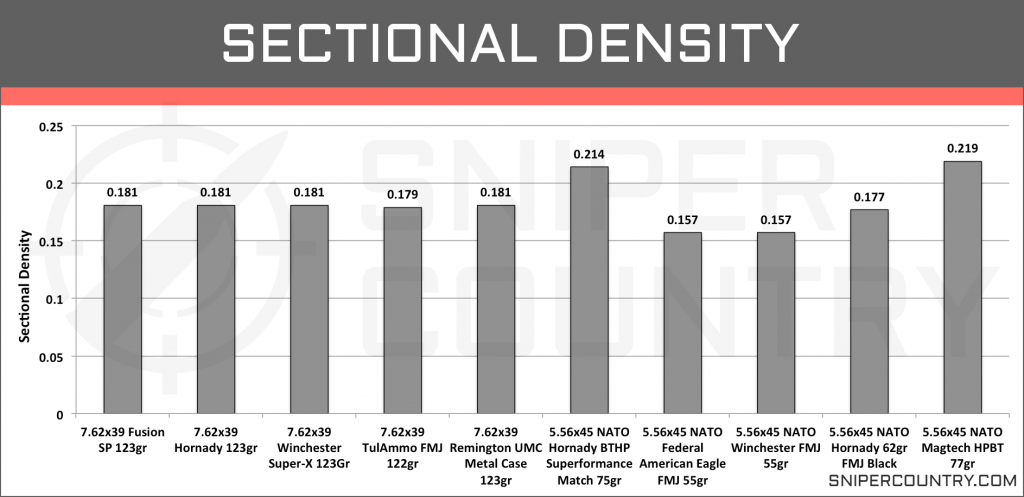
Interestingly, the sectional densities between the two cartridges are quite similar. Despite the 7.62×39 using much heavier bullets, there isn’t a noticeable increase in sectional density compared to the 5.56×45.
Conversely, the 5.56×45 uses lighter bullets, but the smaller diameter concentrates force into a smaller area, resulting in a sectional density comparable to the 7.62×39 rounds.
Due to these similarities, sectional density alone doesn’t provide a clear advantage for one cartridge over the other. The performance will largely depend on the specific rounds and their bullet types.
Below, you’ll find the average sectional densities for all the rounds we have compiled.
Average Sectional Density
| 5.56x45mm | 7.62x39mm |
|---|---|
| 0.181 | 0.182 |
When we add in more rounds, we still see that the sectional densities between these two cartridges are almost identical.
Momentum
The last factor in our stopping power analysis is bullet momentum. Momentum, in terms of terminal ballistics, refers to a round’s ability to overcome resistance. It’s essentially the object’s capacity to maintain its motion, a principle you might recall from physics classes.
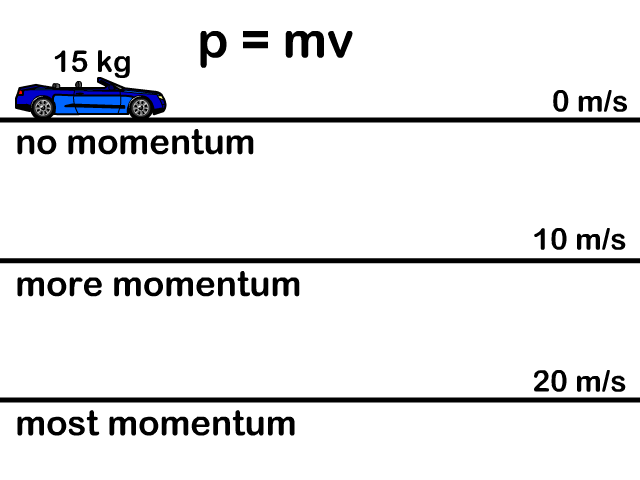
Simply put, a bullet’s momentum is a good number to help understand how well it will be able to push through obstacles such as a big feral hog’s thick hide and dense shoulder bones.
There are of course other aspects of a round that plays a major role in the bullet’s performance when it comes to punching through materials, but for a discussion using computer-generated data, momentum is a good indicator.
And of course, more momentum is not always needed and a decision shouldn’t be made based on what has the higher momentum.
We generated all of the data below, utilizing the mass of the bullet, in grains, and the velocity of the round at a given yard marker. The results are displayed in the graph below.
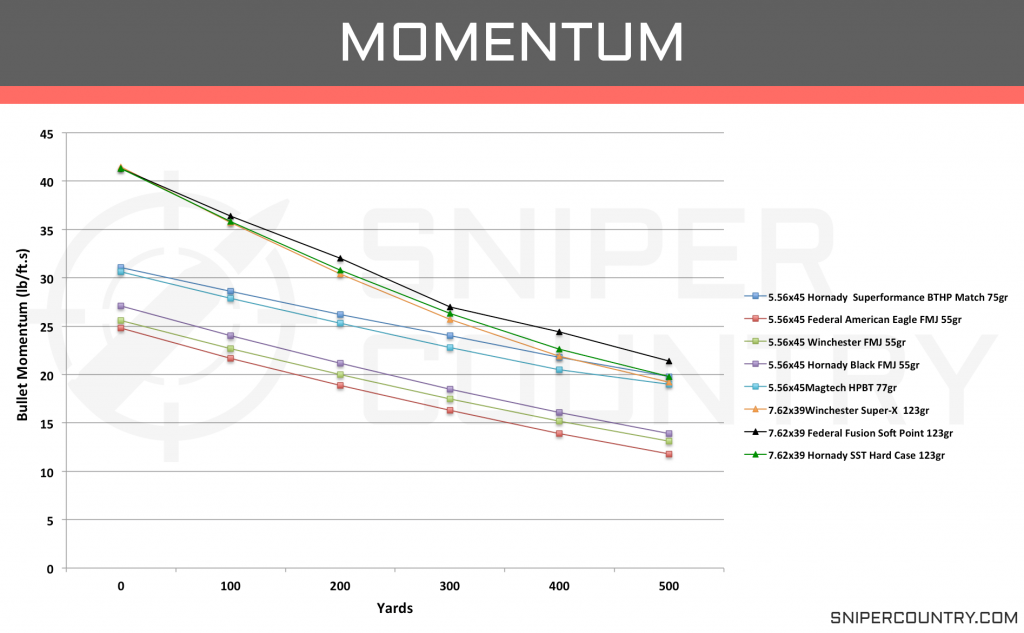
You can see from the start that the majority of the rounds from each cartridge group together with the 7.62 rounds show quite a bit more momentum than the 5.56×45 rounds from the muzzle out to 200 yards.
It is especially significant when comparing the 7.62×39 rounds to the lighter 5.56 rounds. The heavier 5.56×45 rounds (70+ grains) still show less bullet momentum, but the difference is quite a bit less.
With these heavier rounds, we even see them match or even outperform (have higher) the 7.62×39 rounds once the bullets reach the more limiting distances of these rounds at 400 and 500 yards.
Let’s take a look at the average momentum for these two cartridges in the table below.
Average Bullet Momentum (lb/ft.s)
| Yards | 5.56x45mm | 7.62x39mm |
|---|---|---|
| Muzzle | 26.9 | 41.2 |
| 100 | 24 | 35.9 |
| 200 | 21.3 | 30.6 |
| 300 | 18.8 | 26.5 |
| 400 | 16.5 | 22.9 |
| 500 | 14 | 20 |
Just like in our previous discussion, we still see a much greater advantage for the 7.62×39 in bullet momentum.
While the velocities are on average higher for the 5.56×45, the heavier bullet weights of the 7.62 rounds generate higher bullet momentum.
And again, this alone does not mean that the 7.62×39 will be better suited for dealing with thicker protection at every occasion. While the sectional densities of the two cartridges were near identical, bullet design also has a big role to play.
And as we saw when looking at the smaller selection of rounds, there are 5.56×45 rounds that do not show as large a difference from some 7.62×39 rounds as the averages would suggest, especially the heavier 5.56×45 rounds.
Special Offer: Join our private community and get exclusive gun deals, handpicked gear recommendations and updates on law changes, every day!
Join our private community
Accuracy
Comparing accuracy between the 5.56×45 and 7.62×39 cartridges is challenging. The most reliable approach involves testing firearms chambered for each cartridge, using various rounds, and measuring groupings at different distances.
However, this method can be problematic for an article due to numerous influencing factors such as environmental conditions and the shooter’s skill level. Even experienced marksmen can produce varying results from day to day.
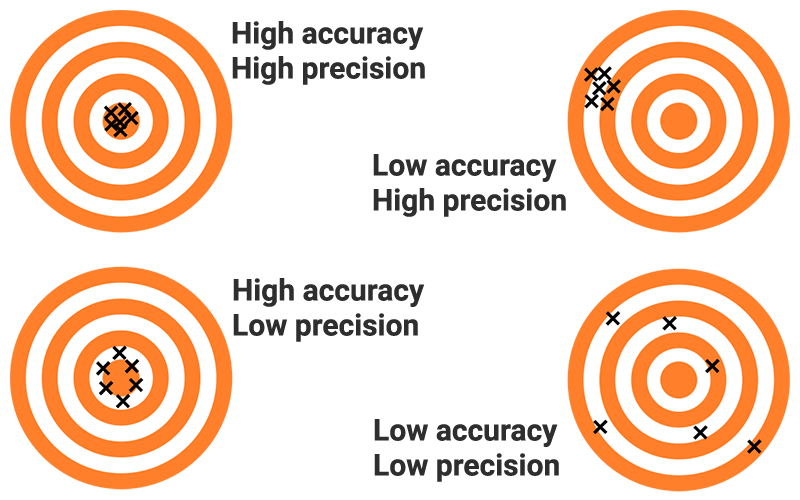
Despite the challenges in directly comparing accuracy, we can still draw some conclusions based on the categories we’ve covered regarding the 5.56×45 vs 7.62×39.
The 5.56 NATO rounds demonstrate a clear advantage in velocity over the 7.62x39mm cartridge. This higher velocity helps the 5.56 rounds maintain a more consistent trajectory.
When examining trajectory, especially beyond 200 yards, the 5.56×45 rounds exhibit a flatter path compared to the 7.62×39.
Although stopping power differs significantly, focusing solely on accuracy shows that the reduced bullet drop of the 5.56×45 facilitates more precise targeting.
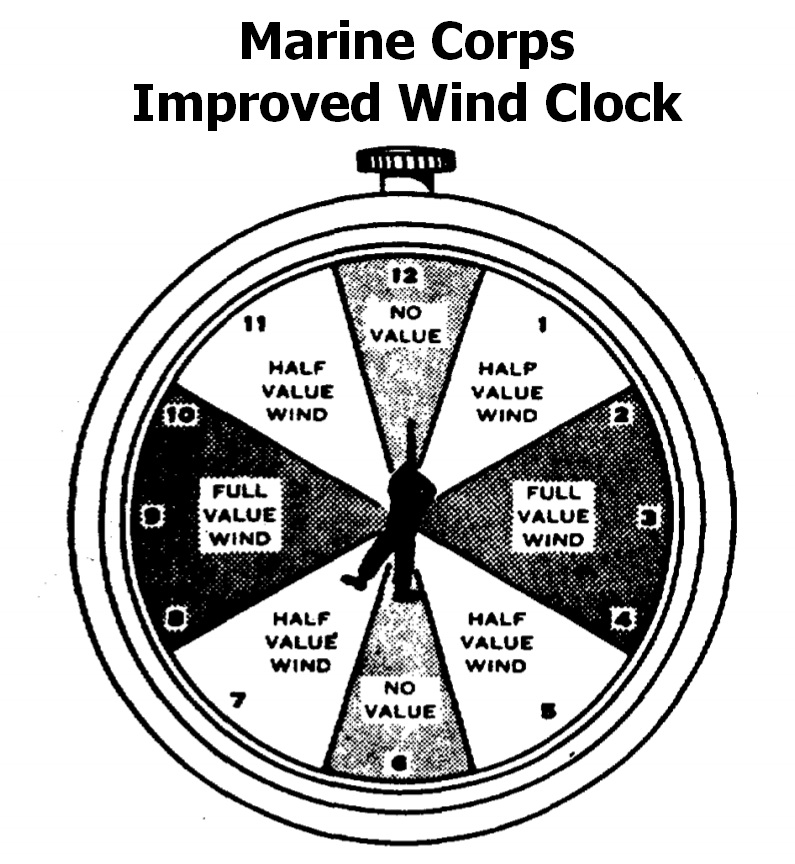
We see a lot of similarities with the ballistic coefficients of these two cartridges though, at least for these rounds, the 5.56×45 has rounds with higher BCs and an overall slightly higher average than the 7.62×39 rounds.
With all of that, both of these cartridges can be accurate rounds within 100 yards. Just taking a position from the numbers we have, there is not going to be any significant advantages or disadvantages between these cartridges at close range.
The 7.62×39 does have slightly more recoil energy than the 5.56×45, and this could impact quick shots in succession being accurate.
Price and Availability
Both cartridges are widely available from various retailers and can be purchased in bulk.
We’ve provided the prices for the ten rounds used in our comparisons, listed per 20-round box. Bulk purchases often offer cost savings.

In today’s market, 5.56×45 Vs 7.62×39 are going to be around the same price. One or the other might be slightly more or less, but it will be close. Normally within about 5 cents per round when comparing ammo types of similar quality.
However, you’ll find a broader range of options for 5.56×45, including various bullet weights, designs, and jackets, compared to the more limited selection for 7.62×39.
| Ammunition | Price |
|---|---|
| 5.56x45 NATO Hornady BTHP Superformance Match 75gr | $28.47 (20 Rounds) |
| 5.56x45 Federal American Eagle FMJ 55gr | $7.99 (20 Rounds) |
| 5.56x45 NATO Winchester FMJ 55gr | $8.99 (20 Rounds) |
| 5.56x45 NATO Hornady FMJ Black 62gr | $18.33 (20 Rounds) |
| 5.56x45 NATO Magtech HPBT 77gr | $33.99 (20 Rounds) |
| 7.62x39 Winchester Super-X 123gr | $27.49 (20 Rounds) |
| 7.62x39 Remington UMC Metal Case 123gr | $19.79 (20 Rounds) |
| 7.62x39 Fusion Soft Point 123gr | $21.99 (20 Rounds) |
| 7.62x39 Hornady SST Steel Case 123gr | $47.25 (20 Rounds) |
| 7.62x39 TulAmmo FMJ 122gr | $10.99 (20 rounds) |
Applications
From our research and experience, the 7.62x39mm provides more options for hunting medium-sized game.
The higher bullet energy of these rounds within 100 yards makes them well-suited for such game.
However, the cartridge’s effective range poses a limitation. For distances within 200 yards, you can achieve accurate bullet placement and, with the stopping power of the heavier projectiles, ensure a clean kill.
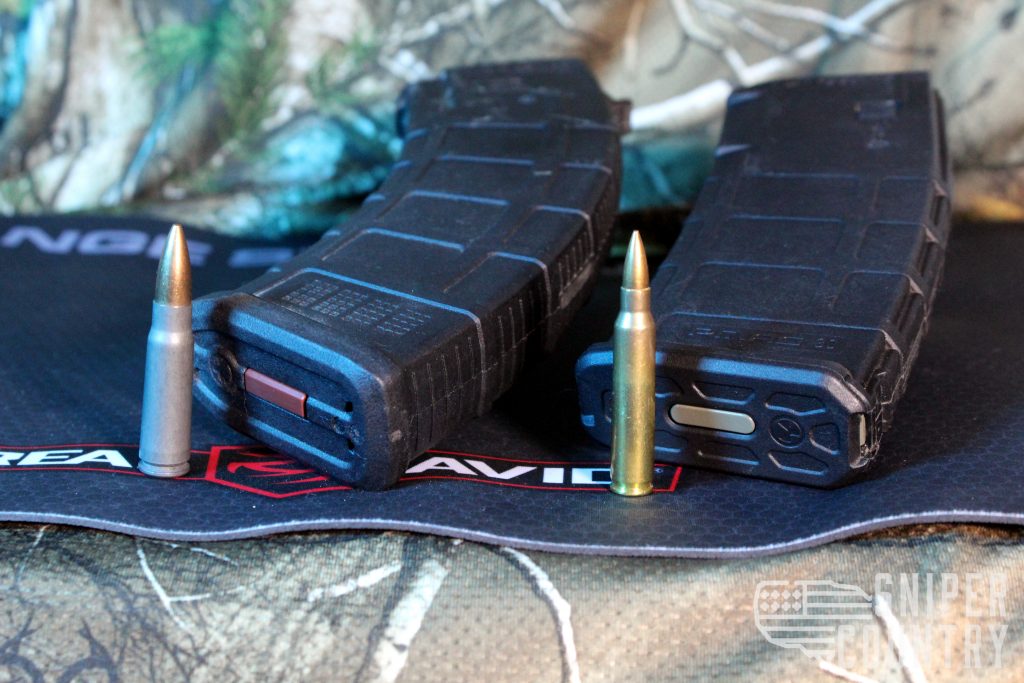
These same qualities make the 7.62x39mm a favored choice for close-quarters combat. With the right bullet design, it can effectively penetrate cover while delivering substantial power.
The 5.56×45 NATO, on the other hand, is suitable for hunting smaller game up to whitetail deer, but its range is limited due to energy loss over distance. Its flat trajectory makes it ideal for small game at longer distances.
For longer range shooting with 5.56×45 Vs 7.62×39, the 5.56×45 NATO offers a much flatter trajectory than the 7.62×39.
For target shooting, 5.56 NATO has a huge advantage as fewer adjustments, which gives you less chance of miscalculation, means a greater chance of landing successive shots on target.
The 7.62×39 cartridge just shows too much bullet drop to be an effective round out past the 300-yard mark.
For ranges up to 200 yards, both cartridges offer relatively flat trajectories, requiring minimal adjustments. At shorter distances, other performance aspects will influence the choice between them.
Best Rounds
As we conclude this article, we’ll review the ten rounds used in our comparison and highlight a few that excel in particular shooting applications.
Top Hunting Round
For hunting, we recommend the 123gr Fusion SP round for the 7.62×39 cartridge. It stands out due to its substantial bullet energy and manageable recoil.
Even at 200 yards, it retains 907ft.lbs of energy and has the flattest trajectory among the 7.62×39 rounds we reviewed. This combination makes it the only round we would confidently use for a 250-yard shot.
Top Range Round
In this section, we want to pick a single round from each cartridge type that belongs on the range.
For the 7.62×39 we like the 123gr TulAmmo FMJ. It’s not expensive and makes it a little easier to burn through a lot of rounds without wiping out your bank account.
The trajectory of this round isn’t the best, and we didn’t pick it to enter into long range competitions. Mainly, we chose it for the price.
For the 5.56×45 cartridge, we like anything made by Black Hills in the 62-77gr range. Black Hills makes amazing ammo and is the only source the Military uses for precision ammo. The 77gr TMK from Black Hills is an amazing round that is wonderful to use at very long ranges.
I’ve shot the 77gr TMK out to 900 yards accurately and have watched better shooters reach past 1,200 yards.
The drawback is that everything Black Hills makes is expensive and hard to find in stock.
Conclusion
When comparing the 5.56×45 and 7.62×39, it’s common to see strong opinions where each side is reluctant to appreciate the benefits of the other cartridge. Both have rich histories and distinct advantages.
Shooters sometimes overlook one cartridge due to loyalty to their preferred choice. This article aims to show that each can be highly effective in the right circumstances.
There’s no rule against owning rifles chambered for both, and doing so can expand your shooting experiences significantly.
Ammunition List
FAQ
Both rounds have their advantages and disadvantages. 5.56 has better ballistics and a flatter trajectory for long range shooting. 7.62×39 can penetrate deeper at shorter ranges partly due to its heavier bullets.




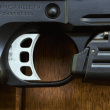
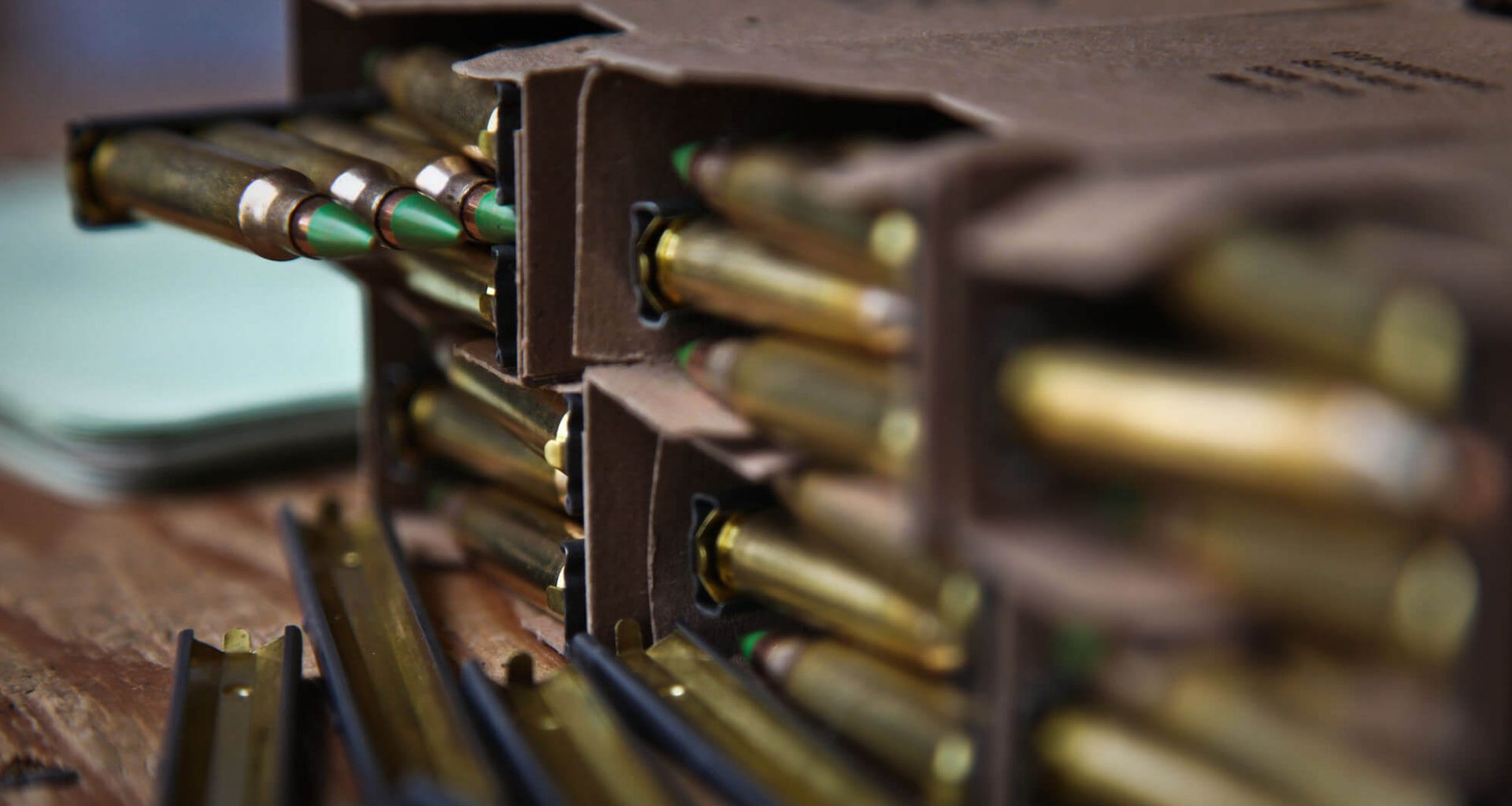
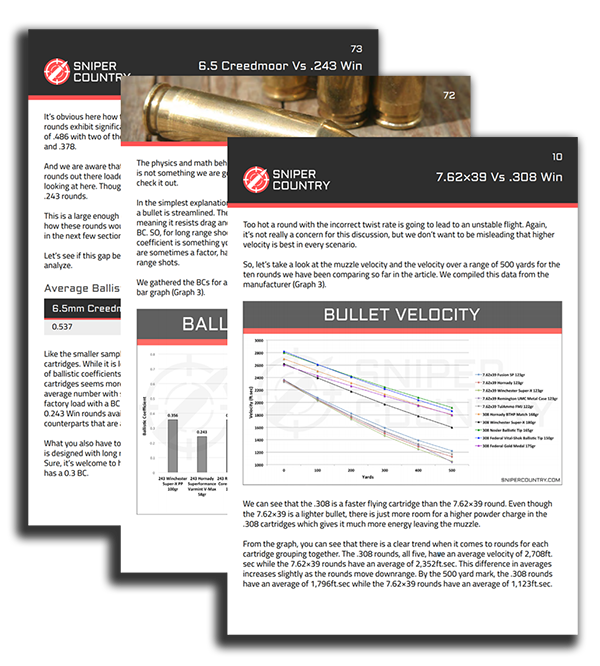


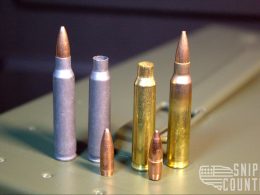


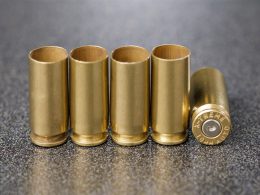
Outstanding fact based article for comparative analysis. I was looking for an increase in stopping power from my 5.56 AR 15 round to one chambered in 7.62, without a significant decrease in accuracy at 100 yds. for the purpose of hog hunting in Texas. Thank You.
Take a look at the CMMG MK47. It is a AR platform that shoot the 7.62×39 and even uses standard AK-47 magazines. A really accurate rifle and a terror on hogs out to 200 yards.
I am buying the .223. I have used the .223 for years. Never owned one personally.
I have been shot at by people using 7.62x39s.
Excellent article! In depth data analysis, coupled with the authors derived insight, should guide all readers to slecting thier optimal cartridge.
Great article with lots of facts and data!
This has been a great read for me. I’m considering building my own AR and based on the type of recreational use I plan to use my gun for, the cartridge info is invaluable.
Thank you for the time and effort to make this so easy to read and understand.
Well done. You also explained the importance of specific ammo for the caliber
Your informative article was a joy to read. My wife and I ordered two M4 carbines in 7.62x39mm having had experience firing this caliber in the SKS platform (four of them!) After a little over fours years we have had no regrets, we use ASC 20 round magazines and the carbines work without a hiccup!
We know of people that hunt Hogs with this cartridge (SKS carbines) and it’s quite popular as they have great success with the 154 grain bullet.
Thank you for your work on this article.
Wonderful well written article that a non-gun expert nor ballistics wiz like me, could clearly understand and grasp. I like his conclusion too, as I have both an AR-15 and a AK-47. Thanks! I learned much.
thanks a lot man, I was confused to buy a rifle with 5.56 or 7.62 for range , hunting and self defense.
Nima from Georgia (Georgia the country not state)
Hi Huston! Anche se non sono un cacciatore, amo giocare con le mie armi in 7.62×39 e 5.56×45.
Non parlo inglese e per questo ho utilizzato il traduttore.
Ti faccio i miei complimenti per questo tuo articolo, che ho trovato veramente molto interessante, sia per i dettagli tecnici che per gli esempi pratici.
Ti posso garantire che di articoli curati così bene come il tuo, non ne ho trovati molti!
Kongrat, Huston! ??
The best caliber for military automatic rifles is 6.67 mm. After 20 years of research, I can confirm this …
Tulammo is only $5.00 for 20 rounds, not $11.00.
Right – $8.79 for 40 rounds at Cheaper than Dirt. Just looked it up.
I thought I would do my best with my rusty Italian to translate Walter’s post below, which was:
Hi Huston! Anche se non sono un cacciatore, amo giocare con le mie armi in 7.62×39 e 5.56×45.
Non parlo inglese e per questo ho utilizzato il traduttore.
Ti faccio i miei complimenti per questo tuo articolo, che ho trovato veramente molto interessante, sia per i dettagli tecnici che per gli esempi pratici.
Ti posso garantire che di articoli curati così bene come il tuo, non ne ho trovati molti!
Kongrat, Huston! ??
Hi, Huston! Although I am not a hunter, I like to “play” with my weapons in 7.72 and 5.56. I don’t speak English, so I’ve used a translator (?) I send you my compliments for your article, which I found truly very interesting – as much for the technical details as for the practical examples. I can guarantee you that I have not found many articles (written) with such great care as yours. Congrats, Huston.
The shooting sports community is indeed worldwide.
As a newby to rifles (don’t own one yet) and to guns in general (didn’t own a handgun until 3 months ago…now we have 4, lol), this article is EXTREMELY helpful!
Great article with graphs and very understandable and succinctly written. Thank you.
Great comparison. Thank you for the information.
Great info. You mentioned the FMJ on the 5.56 as not being an advantage completely. Can you shed more light on the FMJ, good and bad points. Thanks for your help..
Nice research and valuable data.
What about barrel length? What barrel length is the data above assuming? Barrel length affects velocity and energy.
Alex the data in this article was compiled using the ammo mfg data. Early in the article:
“Because it is computer-generated data, the numbers might fluctuate slightly if compared to the same rounds being measured directly from firing a rifle. This is because each rifle has its shooting profile. In fact, the data might fluctuate with the same round from rifle to rifle. Because of this, computer-generated data has an advantage that it negates these small differences between rifle platforms and it also takes environmental factors out of play.”
The 7.62×39 is a much more powerful round.
Was always curious about both rifles as a young man.
So I bought one of each (AR-A2/and a Romak)to see for myself to see what they were about. They are both fun at times, but neither “knocks my socks off”. Gas guns burn dirty and both cartridges have nominal performance. Not much energy past 200 yards. Precision is neither’s forte. The AR15 can shoot fairly decent groups but jams too often. The AK doesn’t jam but shoots 2” groups at 100. Both good for battle but not for target precision unless your willing to pay up. Both rattle too much. Not saying folks shouldn’t own them, just trying to give them a sense of expectations.
Also, I’m partial to bolt actions. So my enthusiasm is limited for both. Anyhow, great article, and go have fun if you decide to own either. No doubt you will likely have fun shooting them. I love every firearm I own, or why buy them in the first place?